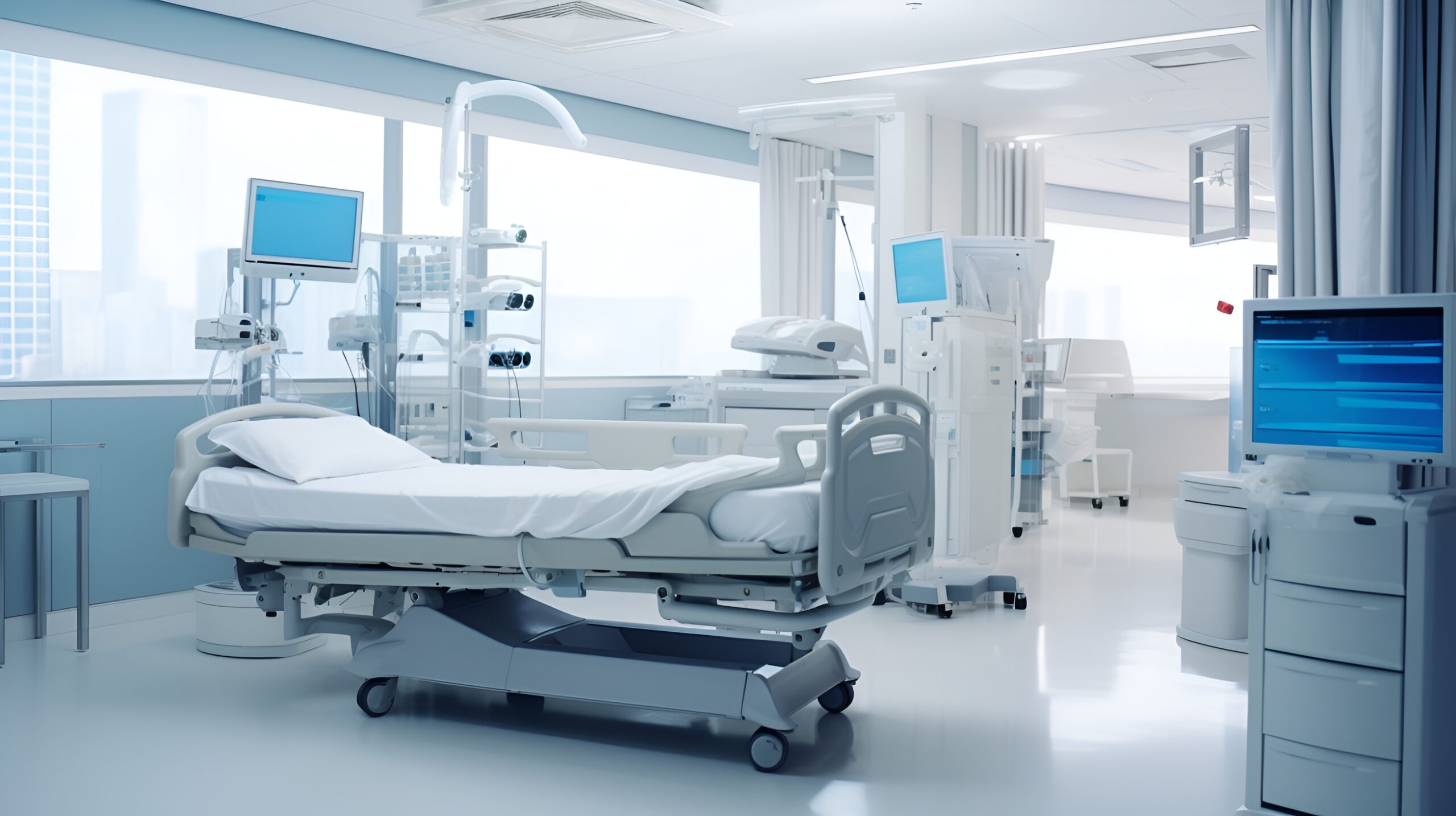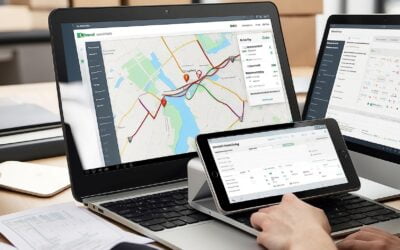
Where effectiveness and accuracy are required, as unlike ever before in healthcare today, technology underscores its role in smooth functioning. Of the many innovations going on in the healthcare sector, one very outstanding change maker is the hospital asset tracking system. These systems, designed to monitor, manage, and maintain medical equipment and supplies, are fast becoming very vital tools for the management of hospitals. They do not just ensure that critical assets are readily available; they even improve the general operational efficiency, reduce costs, and, more importantly, improve patient care outcomes.
Asset tracking for healthcare is concerned with the implementation of advanced technology that keeps tabs on everything from high-value medical devices to everyday consumables. In such an environment where every second counts, locating and having to spend less time searching for the right equipment may mean everything for the outcome of the patient. This article examines the transformational influence of hospital asset tracking systems, ranging from market trends to technological innovation, in their role of taking healthcare management into the future.
Hospital Asset Tracking and Inventory Management Systems Market
The healthcare asset management market has been growing very rapidly, being forced by several key factors, such as technology advancements, extending demand for operational efficiency, and greater focus on patient safety. As clinics become bigger and more complex, the demand for robust hospital asset tracking and inventory management has never been more pressing.
Increasingly, advanced tracking technologies such as Radio-Frequency Identification (RFID) and IoT devices are gaining adoption, which act as one of the major drivers for this market. Real-time data and analytics provided by these technologies enhance the tracking of medical equipment and reduce losses, as well as improving equipment utilisation rates. The push toward digitisation in healthcare has also resulted in demand for comprehensive hospital asset management systems that have the potential for seamless integration with other hospital systems.
Features of Healthcare Asset Management Software

Comprehensive Asset Visibility
One of the strong features of healthcare asset management software is that it provides end-to-end visibility into the location, status, and utilisation of medical assets in use. Since this is a real-time visibility solution, it enables hospital staff to track any equipment in no time and save hours in search time, improving overall efficiency.
Maintenance Management and Compliance
Proper maintenance of medical equipment is essential for operational efficiency and patient safety. Almost all medical device asset management software comes with elements of automating maintenance scheduling and tracking tools. It makes sure that all types of equipment go through periodic inspections and servicing. This not only extends its lifespan but also ensures compliance with industry regulations and standards.
Integration and Interoperability
Modern healthcare asset management software integrates completely with already existing systems in hospitals, such as EHRs, CMMS, and billing systems. This interoperability offers consistency in data on all platforms, reducing errors and enhancing patients’ records and billing accuracy.
Advanced Reporting and Analytics
Other key features of healthcare asset management software include detailed reporting and data analysis. Such tools give useful insights into asset utilisation, maintenance costs, trends in equipment life cycles, and the like. They therefore help a hospital administrator to make evidence-based decisions on how to optimise the performance of the assets while at the same time reducing costs and improving the delivery of patient care. Another very critical feature is the user-friendly interface.
User-Friendly Interface
Usability is one of the more important aspects of medical device asset management software in today’s fast-moving healthcare environment. Most systems provide intuitive dashboards and user-friendly interfaces that enable staff to rapidly retrieve all necessary information with no lengthy induction. This is critical for wide adoption and optimum value from the system.
Benefits of Implementing Medical Equipment Tracking Systems

Enhanced Operational Efficiency
Setting up medical equipment tracking systems brings immense operational efficiency to a hospital. With real-time location and availability data on assets, hospital staff can locate any equipment required in a very short period of time, thereby avoiding delays in attending to patients. This efficiency also applies to inventory management, where automatic tracking ensures that supplies are ordered in time, so that no stock outs or overstock situations occur.
Financial Savings and ROI
While the upfront investment in a hospital asset-tracking system can be significant, the financial benefits accruable in the long term are not debatable. Statistics have shown that hospitals can make notable cost savings through improved asset utilisation, reduced loss of equipment, and reduced instances of downtown due to maintenance issues. Besides, it provides better ways of tracking and managing assets for quick ROI, thus making these systems a very sound financial decision for healthcare facilities.
Improved Patient Safety, Higher Quality of Care
Medical equipment tracking systems are major players when it comes to the safety of patients in any setting within a health facility. These systems help in preventing possible malfunction of equipment, thus improving safety in a healthcare facility by ensuring that medical equipment is serviced regularly and properly calibrated to ensure the best patient care. Besides, quick location and fast deployment with the appropriate equipment enhance the general quality of care offered to the patients.
Compliance with Regulations
Various rigid rules govern the working and maintenance of all types of medical equipment in healthcare facilities. Proper maintenance and usage records for equipment are maintained through hospital asset-tracking systems; therefore, compliance is easy to achieve. This is very important during audits, where minute and accessible records can save many dollars in fines and ensure that the facility complies with all regulations.
The Role of RFID in Hospital Asset Tracking
Modern technology does not stand still. It is actively developing and simplifying human life. Radiofrequency identification (RFID) makes it possible to recognise and register objects using radiofrequency radiation.
What Does the RFID System Consist Of?
There are three components of the RFID system:
Label: Devices for storing and transmitting data. The label “memory” contains an identification code. Some labels have a memory rewrite function.
Readers: Users’ main question is how the RFID reader works. These special devices read data from labels and store it. They communicate with the system and work independently. Readers can be equipped with additional antennas, depending on the system’s configuration and the equipment used.
Management system: These are programs that accumulate and analyse information that links elements into a whole system.
What is an RFID Tag?
An RFID tag is a miniature memory device. It is based on a microchip that stores information and an antenna that transmits and receives data. This label can be active (powered by a power source), but in most cases, the devices do not need power and are described as passive.
RFID tag memory stores unique information, data, and numbers. When it gets into the registration zone, the information is perceived by the reader and read.
Benefits of RFID in Healthcare
The main advantages of RFID asset tracking systems include:
- Systems for reading do not need direct visibility of the label to “read” the data.
- The label falls into the registration zone when reading the data, including moving the device at an increased speed.
- RFID tags are read at an increased distance compared to barcodes. Data stored on the tag can also be much greater – up to 10 thousand bytes.
- RFID tags have an increased level of invulnerability and resistance to the natural environment. Passive labels have no service life limitations.
- By ensuring that equipment is always available when needed, RFID hospital asset tracking systems help streamline patient flow and reduce wait times, leading to better patient experiences.
RFID tags can be used both as information storage devices and as intelligent devices for a wide range of applications. Thanks to a unique identifier, this is achieved.
Future Trends in Healthcare Asset Management

Artificial Intelligence and Predictive Analytics
These technologies are destined to bring major changes in healthcare asset management. AI can use deep analysis of a large volume of data to predict when equipment is more likely to fail or require maintenance, thus facilitating proactive measures by hospitals before patient care is affected. Predictive analytics can also optimise the usage of assets by projecting future equipment needs based on trends in past usage.
IoT and Connected Devices
The Internet of Things will continue to play a significant role in hospital asset tracking systems. IoT-enabled devices can send real-time data about equipment usage, performance, and location, making them easier to track and manage more effectively. In the near future, hospitals could be run as “smart” facilities wherein their assets are all interconnected and managed from one platform.
Blockchain for Data Security
As clinics deal with increasingly sensitive data, the security of asset management systems becomes paramount. Blockchain technology can possibly provide a solution through its secure, decentralised ledger for tracking asset transactions. This would mean higher data security, reduced fraud, and assurance of the integrity of records on asset management.
Advances in RFID and Beyond
While RFID remains a key technology in hospital asset tracking, new developments are in the wings. Innovative technologies like Near Field Communication and Ultra-Wideband are being used to provide even greater accuracy, range, and functionality. These innovations will further leverage the capabilities of hospital equipment tracking systems in terms of effectiveness and efficiency.
Sustainability and Environmental Impact
A more sustainable health sector would mean that healthcare asset management systems will have to change to accommodate green initiatives. This might involve developing eco-friendly tracking technologies and better resource utilisation to reduce waste from poor asset management practices.
The Path Forward: How Asset Tracking Shapes the Future of Patient Care
Hospital asset management systems have been placed at the threshold of a new age in healthcare management. These systems revolutionise the game of hospital operations through real-time location and status tracking of medical equipment to increase efficiency, reduce costs, and enhance patient outcomes. The rapidly growing healthcare asset management market, powered by technological innovation and a rising need for efficiency, is auguring well for the future of hospital asset management. The infusion of AI, IoT, and blockchain – against the backdrop of innovations currently underway in RFID and other tracking technologies – shall help hospitals reach new heights in operational excellence and quality of care.

Try itemit
Choose a better way to track your assets. Start your free 14-day trial now!

Keep Learning
itemit Blog
Tips, guides, industry best practices, and news.
Asset Impairment. A Guide to Tracking and Managing
[lwp_divi_breadcrumbs font_icon="5||divi||400"...
Top Benefits of Using Inventory Management for Bakeries
[lwp_divi_breadcrumbs font_icon="5||divi||400"...
How To Save Money On Computer Maintenance
Want to save money on computer maintenance? Read this post right now to find out how IT asset tracking software can help!




